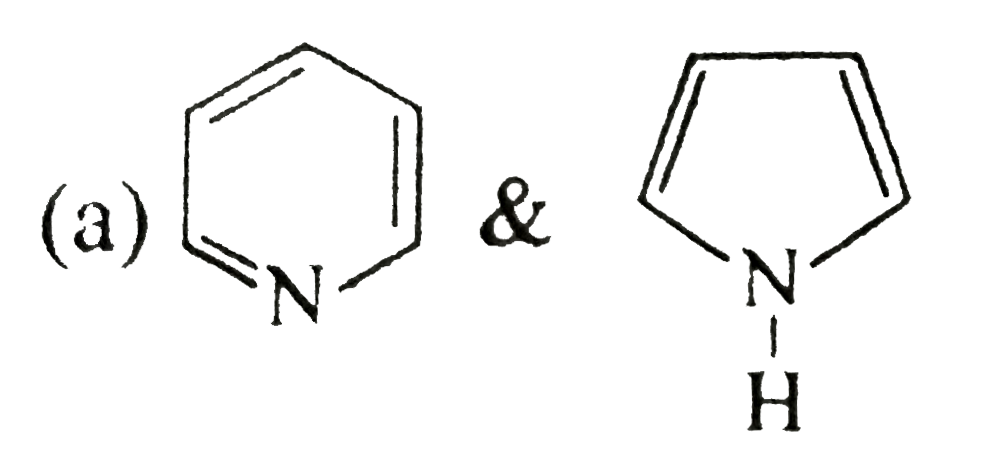Which of the following is a syndiotactic polymer in [−CH2−C(YZ)−]n
All Y groups lie on one side of the chain and all Z groups on the other side
The Y and Z group lie alternately on each side of the chain
The Y and Z group are arranged in a random fasion
Y and Z group are same
The correct Answer is:B
To determine which of the following is a syndiotactic polymer in the structure (−CH₂−C(YZ)−)n, we need to understand the definitions of different types of stereochemical arrangements of polymers, specifically syndiotactic, isotactic, and atactic.
1. Understanding Syndiotactic Polymers:
- A syndiotactic polymer is characterized by the alternating arrangement of substituents on either side of the polymer chain. In this case, if we have groups Y and Z, they should alternate in position along the chain.
2. Identifying Isotactic and Atactic Structures:
- Isotactic: In an isotactic polymer, all the substituent groups (Y) are on one side of the polymer chain, while the other groups (Z) are on the opposite side. This creates a regular pattern.
- Atactic: In an atactic polymer, the arrangement of substituents is random, with no specific order.
3. Analyzing the Given Structure:
- The structure (−CH₂−C(YZ)−)n implies that we have a repeating unit where Y and Z can be positioned in different ways.
- For a syndiotactic arrangement, we would expect Y and Z to alternate in their positions along the polymer chain.
4. Conclusion:
- If the arrangement of Y and Z groups is such that they alternate (e.g., Y on one side, Z on the other, then Z on one side, Y on the other), then this polymer can be classified as syndiotactic.
- Therefore, the correct answer is that the arrangement where Y and Z groups alternate on each side of the chain represents a syndiotactic polymer.
Final Answer:
The syndiotactic polymer in the structure (−CH₂−C(YZ)−)n is characterized by the alternating arrangement of Y and Z groups on either side of the chain.
---
- A syndiotactic polymer is characterized by the alternating arrangement of substituents on either side of the polymer chain. In this case, if we have groups Y and Z, they should alternate in position along the chain.
- Isotactic: In an isotactic polymer, all the substituent groups (Y) are on one side of the polymer chain, while the other groups (Z) are on the opposite side. This creates a regular pattern.
- Atactic: In an atactic polymer, the arrangement of substituents is random, with no specific order.
- The structure (−CH₂−C(YZ)−)n implies that we have a repeating unit where Y and Z can be positioned in different ways.
- For a syndiotactic arrangement, we would expect Y and Z to alternate in their positions along the polymer chain.
- If the arrangement of Y and Z groups is such that they alternate (e.g., Y on one side, Z on the other, then Z on one side, Y on the other), then this polymer can be classified as syndiotactic.
- Therefore, the correct answer is that the arrangement where Y and Z groups alternate on each side of the chain represents a syndiotactic polymer.
The syndiotactic polymer in the structure (−CH₂−C(YZ)−)n is characterized by the alternating arrangement of Y and Z groups on either side of the chain.
Topper's Solved these Questions
- BIOMOLECULES AND POLYMERBOOK - ERRORLESS CHAPTER - BIOMOLECULES AND POLYMEREXERCISE - Ordinary Thinking (Composition,properties, and uses of polymers )
48 Videos
- BIOMOLECULES AND POLYMERBOOK - ERRORLESS CHAPTER - BIOMOLECULES AND POLYMEREXERCISE - Critical thinking (objective question)
37 Videos
- BIOMOLECULES AND POLYMERBOOK - ERRORLESS CHAPTER - BIOMOLECULES AND POLYMEREXERCISE - Ordinary Thinking (Classification on polymers)
45 Videos
- ANALYTICAL CHEMISTRYBOOK - ERRORLESS CHAPTER - ANALYTICAL CHEMISTRYEXERCISE - JEE Section (Only One Choice Answer)
36 Videos
- CARBOXYLIC ACID AND THEIR DERIVATIVESBOOK - ERRORLESS CHAPTER - CARBOXYLIC ACID AND THEIR DERIVATIVESEXERCISE - Jee Section (Matrix Match type Questions)
2 Videos
Similar Questions
Knowledge Check
Which of the following should be most valatile ?
CH3CH2CH2NH2
(CH3)3N
C2H5−NH−CH3
CH3CH2CH3AIIBIVCIDIIIWhich of the following does not react with nitrous acid?
1. (CH3)3N
2. C2H5−NH2
3. (CH3)2NH
4. (CH3)3C−NO2
5. C2H5−NO2A2, 3B4, 5C1, 4D2, 5Which of the following complexes can exhibit optical isomerism? (en=H2N−CH2−CH2−NH2)
Acis−[Co(NH3)4Cl2]B[Co(NH3)3Cl3]Ccis−[Co(en)2Cl2]Dtrans −[Co(en)2Br2]
Which of the followig pairs has higher resonance energy:
(a).
(b). CH2=CH−O−CH=CH2&CH2=CH−NH−CH=CH2
(c). CH2=CH−ΘNH&NH=CH−ΘNH
View SolutionWrite the names of monomers of the following polymers :
−⎡⎢ ⎢⎣−CH2−Cl∣C=CH−CH2−⎤⎥ ⎥⎦−n
View SolutionWhich of the following is not the metamer of CH3CH2−N∣CH3−CH2CH2CH2CH3
View SolutionThe monor unit of the following polymer
{NH−CO−NH−CH2}n
View SolutionWhich of the following species is/are isoelectronic to each other ?
(I) ΘBH3−C≡N
(II) CH3−C≡CH
(III) N2O
View Solution

